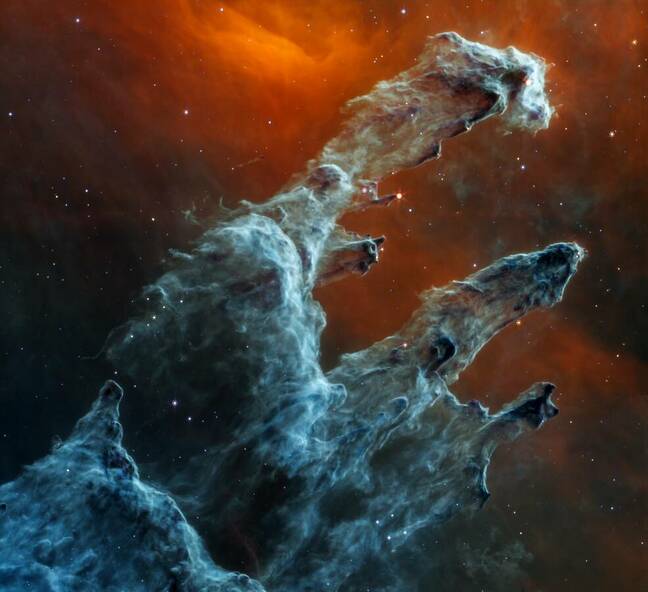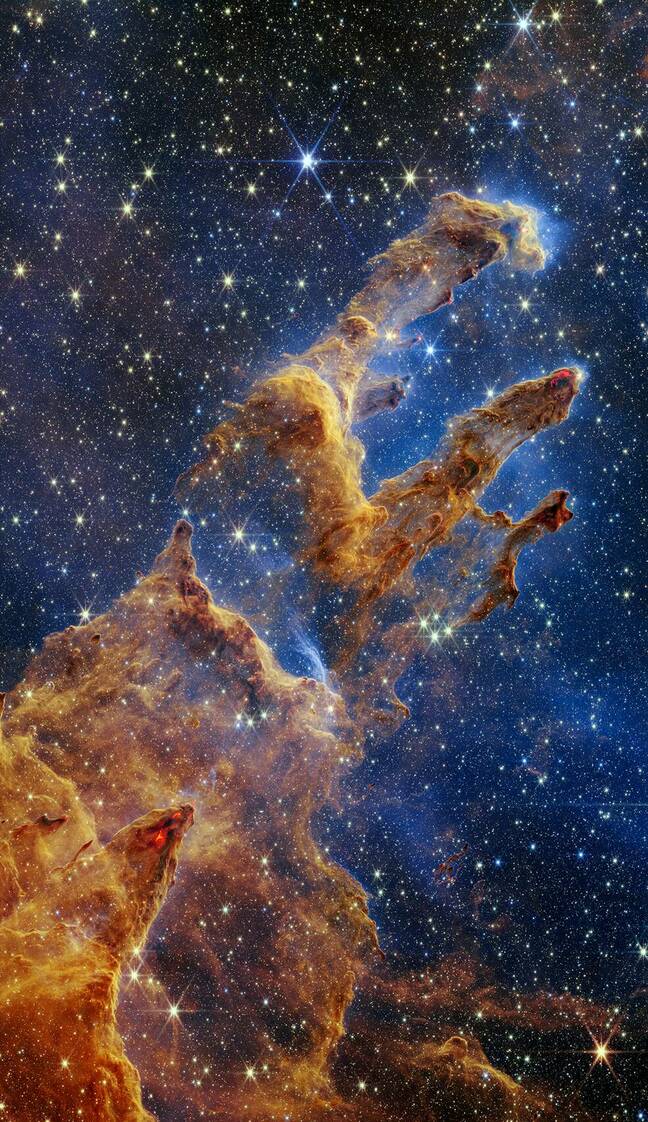This article is more than 1 year old
Spooky Pillars of Creation snap reveals a dark side
Latest James Webb Space Telescope photo looks positively haunting
The James Webb Space Telescope team has released its latest snap of the Pillars of Creation that strikes a perfect eerie, dusty tone for Halloween.
Unlike the star-filled, color-rich photo of the astronomical marvel NASA published this month taken using JWST's Near-Infrared Camera (NIRCam), the latest image shows the pillars lifeless and gray, with few stars visible through a thick cloak of dust.
The picture was taken by Webb's Mid-Infrared Instrument (MIRI), which rather than capturing images of near-infrared light focuses on mid-spectrum infrared light, which NASA said is far better at picking up interstellar dust.
- Hubble's cosmic science is mind-blowing, but its soul celebrates something surprising about us
- We've seen things you people wouldn't believe. A planet, dense as a marshmallow, that would float on water
- Hubble 'scope snaps ENORMO SPACE ERECTION: Pillars of Creation 20 years on
- Famously flawed, it is 30 years since the Hubble Space Telescope was launched
"Mid-infrared light specializes in detailing where dust is, [and] the stars aren't bright enough at these wavelengths to appear," NASA said.
What the image does show is a lot of very important dust that's a major factor in star formation, and stars that are still in the process of developing, which can be spotted by their red hue in the MIRI photograph.
"When knots with sufficient mass form within the pillars of gas and dust, they begin to collapse under their own gravity, slowly heat up, and eventually form new stars," NASA said.
The NIRCam image shows stars throughout their formation cycles, as well as jets of energetic matter being shot out from developing stars, which appear like "lava" near the ends of some of the pillars. The stars emitting those bursts of light are estimated to only be a few hundred thousand years old.
For those curious about the size of those red-hued baby stars, NASA has you covered: "Trace the topmost pillar, landing on the bright red star jutting out of its lower edge like a broomstick. This star and its dusty shroud are larger than the size of our entire solar system."
The Pillars of Creation were first photographed by NASA's Hubble Space Telescope in 1995 and again in 2014 in both visible and near-infrared light. While the Pillars themselves are roughly four to five light years long, they're only a small portion of the larger Eagle Nebula, which stretches 70 by 55 light years. The nebula itself lies 6,500 light years away.
Below is a video giving you a better idea of where the pillars are located.
NASA said that photographs of the pillars in different wavelengths of light each give scientists more clues about how stars form. The latest image, NASA said, is the highest resolution in mid-infrared that has been taken of the pillars and will allow for "more precise dust measurements to create a more complete three-dimensional landscape of this distant region." ®


